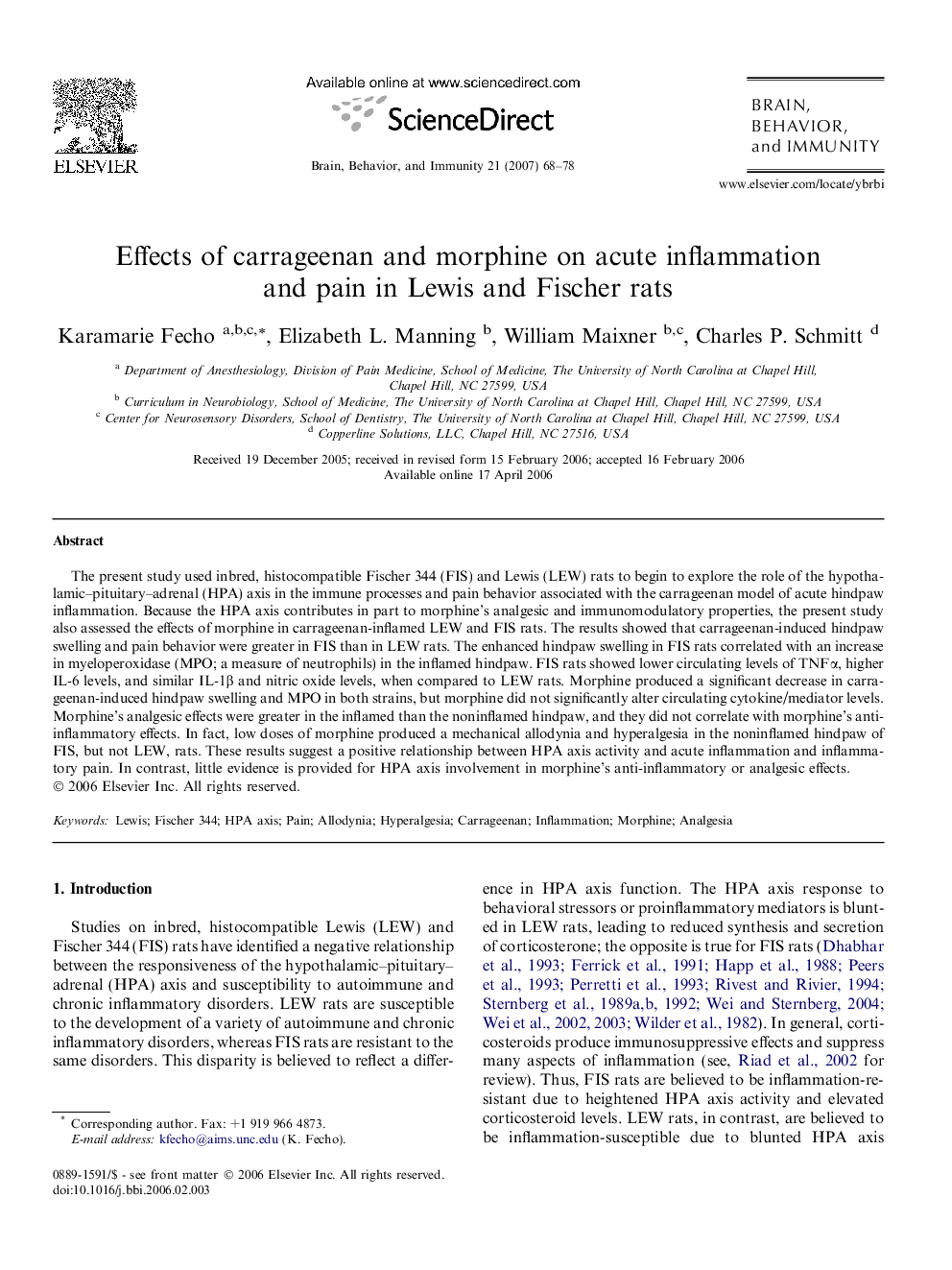| Article ID | Journal | Published Year | Pages | File Type |
|---|---|---|---|---|
| 923534 | Brain, Behavior, and Immunity | 2007 | 11 Pages |
The present study used inbred, histocompatible Fischer 344 (FIS) and Lewis (LEW) rats to begin to explore the role of the hypothalamic–pituitary–adrenal (HPA) axis in the immune processes and pain behavior associated with the carrageenan model of acute hindpaw inflammation. Because the HPA axis contributes in part to morphine’s analgesic and immunomodulatory properties, the present study also assessed the effects of morphine in carrageenan-inflamed LEW and FIS rats. The results showed that carrageenan-induced hindpaw swelling and pain behavior were greater in FIS than in LEW rats. The enhanced hindpaw swelling in FIS rats correlated with an increase in myeloperoxidase (MPO; a measure of neutrophils) in the inflamed hindpaw. FIS rats showed lower circulating levels of TNFα, higher IL-6 levels, and similar IL-1β and nitric oxide levels, when compared to LEW rats. Morphine produced a significant decrease in carrageenan-induced hindpaw swelling and MPO in both strains, but morphine did not significantly alter circulating cytokine/mediator levels. Morphine’s analgesic effects were greater in the inflamed than the noninflamed hindpaw, and they did not correlate with morphine’s anti-inflammatory effects. In fact, low doses of morphine produced a mechanical allodynia and hyperalgesia in the noninflamed hindpaw of FIS, but not LEW, rats. These results suggest a positive relationship between HPA axis activity and acute inflammation and inflammatory pain. In contrast, little evidence is provided for HPA axis involvement in morphine’s anti-inflammatory or analgesic effects.
